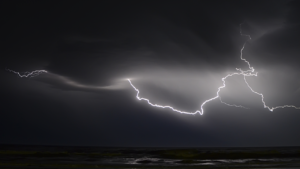Today, we have meteorologists and weather reports to explain the reasoning for the latest sudden downpour or storm. Ancient civilisations, however, believed the weather was controlled by various gods and deities. But who were these characters that could whip up a storm into a frenzy? Let’s take a look.
Ancient Greek – Aeolus

Ancient Greek mythology is enduringly popular even today, with many forms of media inspired by their narratives. While Aeolus is admittedly not as popular as characters like Zeus or Hades, the ancient Greek god of winds has still sparked inspiration. This can be seen in the Age of Gods: God of Storms game which is centred around the character of Aeolus, featuring symbols of the tale and its legacy such as vases, shops, and the legendary sea dragon. Aeolus himself even appears to blow the ships across the screen, making for authentic and immersive gameplay.
But, if you’ve not heard of Aeolus, who exactly was he? Well, that depends on who you ask. There are three Aeolus’ in Greek mythology who have become muddled over time. Only one of these is known as the ruler of the winds, the tale of which is told in Homer’s Odyssey, Virgil’s Aeneid, and the histories of Diodorus Siculus. In Homer’s narrative, Aeolus inherited control over the winds as the ruler of a floating island called Aeolia, which was granted to them by Zeus. From these powers, Aeolus had the power to control the wind and, with that, the waves.
Ancient Egyptian – Seth
Like Aeolus, the ancient Egyptian god Seth is perhaps lesser known than his peers such as Horus or Ra. Nevertheless, the god, otherwise known as Set, Satet, or Sutekh has inspired characters in modern media, such as role-playing games, films, books, and TV shows. Though historical representations of Seth have differed over the centuries, he is mainly known as the god of deserts, storms, and combat due to being the son of the Earth (Geb) and the Sky (Nut).
Seth has been depicted as having the head of various animals in Egyptian art, from mice to pigs, jackals to aardvark. As such, it is often known simply as the ‘Seth animal’. Though we aren’t sure exactly how Seth was able to control the weather, according to Britannica, Seth embodied the necessary and creative element of natural disorder – in other words, he represented the chaos, unpredictability, and duality of the weather. With this in mind, he is often associated with bad yet powerful phenomena like thunderstorms and earthquakes.
Celtic – Taranis

Of course, we couldn’t go without mentioning the gods from ancient Welsh traditions. Taranis, otherwise known as Toranos, Tanaro, and Thunar, was the Celtic god of thunder, who was worshipped throughout Celtic Britain and Ireland, as well as parts of Western Europe. In fact, linguistically, the name for this god is thought to have the same root as thunder itself.
Though Taranis is later believed to have become synchronous with the god Jupiter, little is actually known about the Celtic thunder god. Nevertheless, according to Mythopedia, what we do know about Taranis is that he could control storms, often represented as using a thunderbolt like a spear. He also usually has a wheel, the symbol of mobility, showing how fast storms can escalate.
And there you have it – just a few of the forgotten mythical characters from ancient civilisations who were believed to have power over the weather. From the Greeks to the Egyptians, and even the Celts, one thing they agree on is how unpredictable the weather can be!
Help keep news FREE for our readers
Supporting your local community newspaper/online news outlet is crucial now more than ever. If you believe in independent journalism, then consider making a valuable contribution by making a one-time or monthly donation. We operate in rural areas where providing unbiased news can be challenging. Read More About Supporting The West Wales Chronicle





















